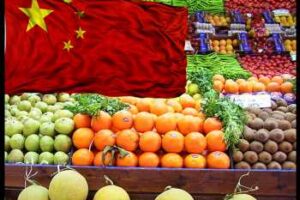China Inflation Weakest Since Late 2021; Producer Price Deflation Worsens

China’s consumer prices grew at the slowest pace since September 2021 and producer prices declined the most in 33 months in March, providing some space for monetary policy maneuver.
Consumer prices gained 0.7 percent on a yearly basis in March, following an increase of 1.0 percent in February, the National Bureau of Statistics said Tuesday. Inflation was forecast to remain at 1.0 percent.
Inflation remained well below Beijing’s full year target of around 3.0 percent.
Capital Economics’ economist Zichun Huang said consumer price inflation will rebound in the coming months as the labor market tightens again and will peak at 2.3 percent in early next year.
Nonetheless, inflation will stay well below the government’s ceiling and the increase in inflation will be far smaller than what was seen elsewhere when they opened up, the economist added.
The consumer price index logged a monthly fall of 0.3 percent in March, confounding expectations for an increase of 0.2 percent.
Food prices increased 2.4 percent on a yearly basis, slower than the 2.6 percent rise in February. Non-food prices gained only 0.3 percent.
Core inflation that excludes food and energy moved up to 0.7 percent from 0.6 percent in February.
Producer prices declined 2.5 percent from the last year, slower than the 1.4 percent decrease in February, the NBS said in a separate release. This was the sharpest fall since June 2020.
However, the decline was largely driven by a high base of comparison, the NBS said.
The slowdown in consumer price inflation as well as continuing fall in factory gate prices would provide space for the central bank to take measures to cushion economic growth.
The Chinese government has set a moderate growth target of around 5 percent for this year after Beijing missed its growth target of ‘around 5.5 percent’ last year by a wide margin.
Last month, the People’s Bank of China cut the reserve requirement ratio for banks by 25 basis points for the first time this year to support the nascent economic recovery.
Source: Read Full Article
